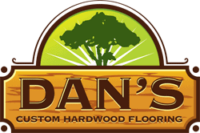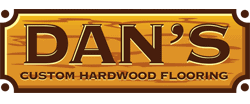How Engineered Hardwood Flooring Is Engineered
There are two basic kinds of hardwood flooring, engineered and solid. Solid hardwood flooring is just solid planks of wood. Engineered hardwood, however, is made from multiple layers of wood that are pressed together. Engineered hardwood has some advantages over solid hardwood. They stem from the way it is manufactured. Here is how engineered hardwood is engineered.
Layers
Engineered hardwood is typically made from three to twelve different layers of wood. The middle layers are typically made of a cheap hardwood or a soft plywood. These inner core layers are basically filler layers that add thickness to the planks without adding much weight or expense. They also have the tongue and groove system cut along the edges of the boards. The top layer of the wood is usually the thickest individual layer; this is the hardwood layer that has the actual hardwood that you want to buy. The veneer layer is visible on top of the wood.
The very bottom layer is often a vapor layer. The vapor layer is waterproof or absorbent, depending on the type of engineered plank. The layer will prevent moisture from seeping into the wood.
All of these layers are typically cross-layered, which means that they are laid in such a way that the grains are perpendicular to one another. That creates a stronger plank. The layers are glued together and then pressed in a machine.
Finally, the wood is stained and sealed at the factory. Typically, engineered hardwood is prefinished; that means that the company that produces it uses a UV-cured finish that is baked onto the wood.
Advantages
Engineered hardwood flooring has three distinct advantages. For one, it is very quick to install. You do not need to stain or finish engineered hardwood. It’s already stained and finished; you just need to lay it. Secondly, engineered hardwood is resistant to warping. It does not absorb moisture as easily as solid hardwood. That means that it will resist cupping even in humid environments. Finally, engineered hardwood doesn't need a subfloor. It can be installed as a floating floor. Each individual plank connects to the ones around it but they’re not nailed down
Engineered hardwood is available in just about every type of hardwood. You can often find hard-to-find hardwoods as engineered planks since much less of the wood is required. Only the veneer layer will be in the rare hardwood. All of these factors make engineered hardwood a solid choice.

